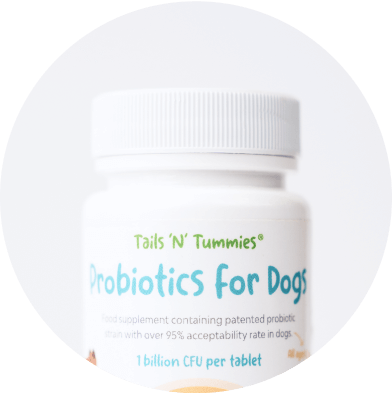Distemper in Dogs: Symptoms, Causes, and Treatment
Don’t wait until it’s too late! Check out this blog post to learn the warning signs and symptoms of Distemper - a viral disease that can be quite deadly.

When you first become a pet parent, there are so many new and exciting responsibilities that come along with the job. You’ll start with the basics: learning about feeding, training essentials, grooming, and puppy vaccines - the list goes on and on.
But one of the most important things you need to know is how to recognize and treat any illnesses or diseases your four-legged companion might encounter - one of which is distemper.
This highly contagious viral disease is one that many pet owners have heard of, but most of us aren’t actually sure what it is.
Fear not! In this blog post, we will discuss what canine distemper is and what symptoms may indicate its presence. Furthermore, we will explore its causes, and available treatment options should your pup become infected. Let’s get started!
What is Distemper in Dogs?
Canine Distemper Virus (CDV) is a highly contagious, potentially life-threatening disease that can wreak absolute havoc on an infected dog’s body. A multifarious disease, CDV targets the respiratory, gastrointestinal, and nervous systems of both young puppies and adult dogs.
Though most commonly recognized in dogs, CDV may affect a variety of other animals as well, including some species of wildlife (foxes, wolves, raccoons, skunks, ferrets, seals, and even some types of “big cats” like tigers and lions). Unfortunately, because CDV is an airborne disease, it can easily be transmitted to domestic pets from their wild counterparts - and vice versa!
How Do Dogs Get Distemper?
Most healthy dogs become infected with CDV through airborne exposure - when an infected dog or wild animal coughs or sneezes, releasing the virus into their environment. CDV can also be transmitted by shared surfaces, such as food bowls, kennels, and toys.
Mother dogs can also pass this disease directly to their offspring through the placenta. Any unvaccinated dog is susceptible to CDV, though young puppies are particularly vulnerable - especially if they are under four months of age and have not yet achieved full vaccination status.
Distemper Symptoms in Dogs
Because CDV affects so many different organ systems, it can cause a wide variety of disastrous symptoms ranging from severe diarrhea to seizures. Though surprisingly enough, the very first sign of CDV involves the eyes.
Dogs affected with CDV will initially produce a watery or pus-like discharge from their eyes. Then, they will develop the following signs either acutely (suddenly and all at once) or gradually:
Shortly after the onset of these symptoms, the virus will begin to progress into the nervous system, causing one or more neurological deficits. These may include a head tilt, muscle twitching, walking in circles, convulsions, seizures, and even whole or partial paralysis. CDV has also been nicknamed “hard pad disease” because it can cause the hardening or thickening of an infected dog’s paw pads.
Distemper in Dogs Treatment
Canine Distemper Virus is a disease without a cure, which means that there is no effective way to actually treat it. However, there are many ways to provide supportive care to an infected dog while they fight off the illness.
Supportive care for pets with CDV typically requires a three-pronged approach, as there are three main body systems affected by the distemper disease: the gastrointestinal (GI) system, the respiratory system, and the nervous system.
Supportive Care for the GI System
CDV can cause a slew of uncomfortable GI symptoms, including severe vomiting and diarrhea which can quickly lead to dehydration. To combat this, the infected pet may require hospitalization with one or more of the following treatments:
- IV Fluids (to treat and prevent dehydration)
- Anti-nausea medication (to discourage vomiting)
- Antibiotics (to treat systemic infection)
- Anti-diarrheal medications (to treat diarrhea)
- Probiotics (to restore good gut health)
Because distemper weakens the immune system so significantly, dogs with CDV are also at risk for a slew of secondary issues, including bacterial infections, sepsis, and disseminated intravascular coagulation (DIC). Pet owners should also be aware that CDV has a high fatality rate, and not all pets will recover (despite even the most invasive or expensive treatments).
Supportive Care for the Respiratory System
In many cases, CDV will cause severe pneumonia, resulting in a terrible cough and difficulty breathing. To combat this, infected dogs may need to be hospitalized so that they can receive antibiotics and oxygen therapy if necessary.
Supportive Care for the Nervous System
Perhaps the most unsettling symptom to witness, seizures are one of CDV's most widely reported symptoms. And because these seizures can cause irreversible brain damage or even death, the best way to combat them is to hospitalize the infected pet so that they are monitored twenty-four-seven and can be given anticonvulsant drugs as needed.
Can Dogs Survive Distemper?
Canine Distemper Virus is an intimidating condition, but it is not always fatal. In fact, this condition is one that many dogs have (and will) survive. However, there are a lot of factors that play into an individual pet’s prognosis, and adult dogs are much more likely to survive CDV than young puppies.
It’s important to mention here that even if a dog survives CDV, he may not return to his normal demeanor. Survivors of this condition typically have chronic neurologic issues, including seizures and muscle twitches. These symptoms may develop several weeks or even months after a dog has been infected with CDV and may remain for the rest of a dog’s life.
How to Prevent Distemper in Dogs
The single best way to prevent your pet from contracting Canine Distemper Virus is to ensure they are vaccinated against it - a procedure that should only be performed by a licensed veterinarian to ensure proper safety and handling.
What is the Distemper Vaccine for Dogs?
The distemper vaccine consists of a modified version of the virus, which helps train the immune system to recognize and resist it if exposed. This particular vaccine is typically given as part of a combination vaccine, which will also protect against a slew of other airborne evils such as Parvovirus.
To keep your pet safe from this preventable ailment, adult dogs should be vaccinated annually, though puppies will require multiple distemper boosters when they are young. While not 100% effective, following regular vaccination schedules can drastically reduce the chances of a viral outbreak.
Are There Any Side Effects of the Distemper Vaccine in Dogs?
Most dogs have no adverse side effects as a result of being vaccinated for distemper, though some may experience soreness or tenderness at the injection site, a low-grade fever, and general lethargy. Although uncommon, allergic reactions can also occur when a dog receives the vaccine. If you notice any of these symptoms in your dog after vaccination, it is important to consult with your veterinarian for further guidance.
FAQs About Distemper in Dogs
“How long will my dog be contagious with distemper?”
Dogs with distemper typically remain contagious for at least two weeks, during which time they should be completely isolated from other animals. Dogs with neurological symptoms can remain infectious for four months or even longer.
“Can dogs get distemper after vaccination?”
Vaccination is a key factor in protecting dogs from distemper, but it is not an absolute guarantee. Though it is possible for a vaccinated dog to contract CDV, their symptoms are likely to be much less severe as a result and with less potential for a large-scale outbreak.
“How often do dogs need distemper shots?”
Adult dogs only need to be vaccinated against distemper once yearly, though some states also offer a three-year vaccine. Young puppies, however, must be vaccinated every 2-3 weeks for the first 3-4 months of their life. If you have further questions about vaccine protocols, please reach out to your local veterinarian, as each state has its own specific requirements.
“How do I know if my dog is recovering from distemper?”
Signs of recovery will include increased appetite, more energy, and decreased discharge from the nose and eyes. Additionally, dogs recovering from CDV should begin breathing easier with a more normal, regulated body temperature. As always, it’s best to consult with your veterinarian regularly throughout this process to ensure your four-legged companion fully recovers.
“Is distemper contagious to humans?”
There is no evidence at this time to show that distemper is transmissible to humans.
Conclusion
Canine Distemper Virus is a highly contagious infectious disease with a grievous fatality rate. And since this virus is airborne, the risk of contracting it can never truly be eliminated. Fortunately, most pet parents can prevent their dogs from catching this disease by regularly vaccinating against it.
The bottom line? By raising awareness about the dangers of this deadly disease, we can protect our four-legged friends and our community as a whole!
Boost Their Gut Health with Probiotics for Dogs
Facing digestive issues in your furry friend? Our Probiotics for Dogs is a blend aimed at enhancing gut health, boosting nutrient absorption, and promoting overall wellness. Dive into a world where your dog’s tummy troubles are eased. Your beloved companion deserves a life of comfort and vitality. Discover the benefits today.
Shop Probiotics